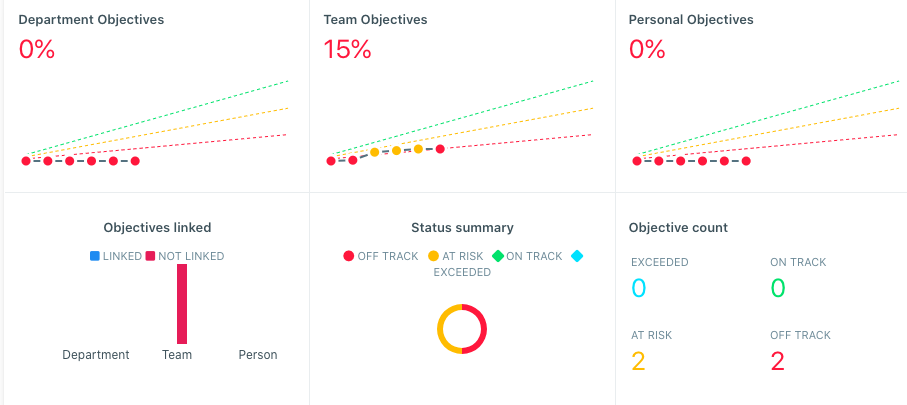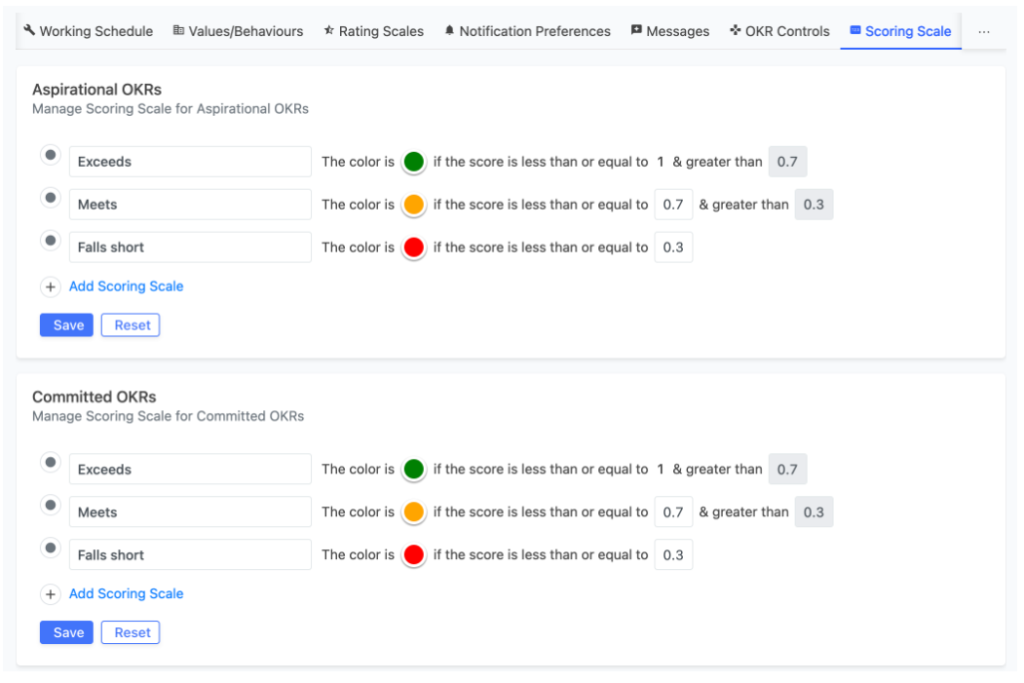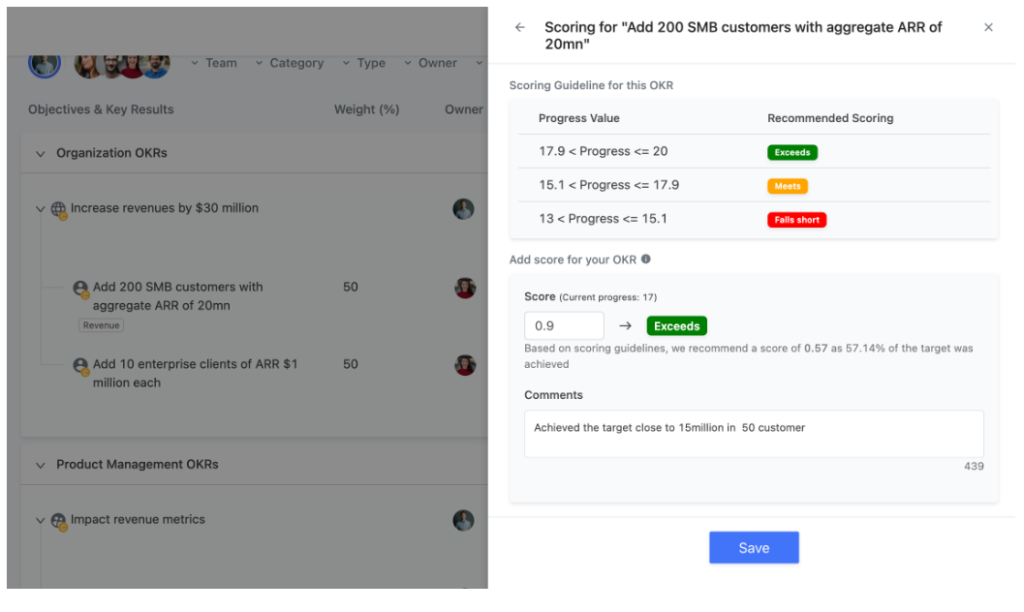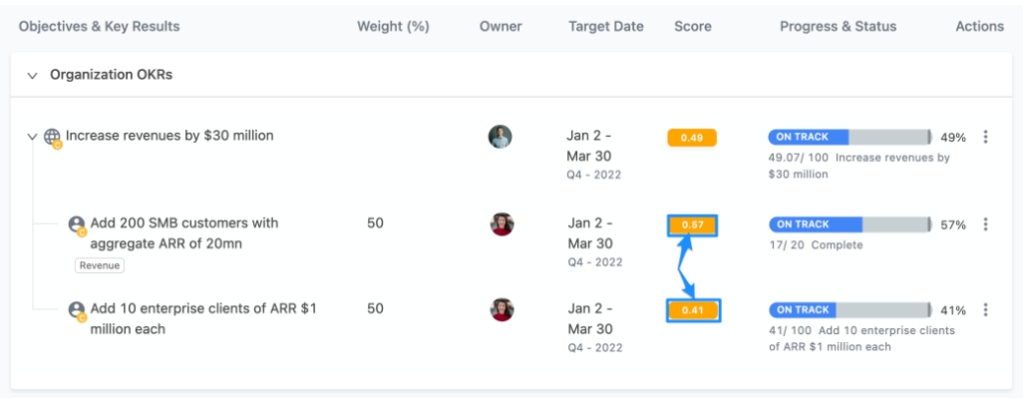If you are approaching your quarterly OKR review, it’s the perfect time for OKR scoring.
Tracking OKRs lets you and your team reflect on accomplishments and helps evaluate what must be done differently in the next cycle, or months ahead. Regularly monitoring and evaluating your OKRs increases the likelihood of accomplishing your goals.
Without a strong Objectives and Key Results (OKR) tracking and scoring strategy, it can be difficult to assess performance and make progress toward long-term Objectives. While most OKR software solutions have a system-generated scoring method, it is important to understand the system behind the scores.
What is OKR Scoring?
Scoring or grading OKRs is about setting specific criteria to evaluate the success of the OKR methodology.
By conducting regular check-ins you can score or grade OKRs to ensure more accountability, motivate teams, and track progress more easily.
The OKR framework compared to other goal-setting methodologies is unique because it includes weekly OKR check-ins. This enables regular tracking and reviewing of goals, making it possible to identify what must be done to stay on the right path toward achieving your goals.
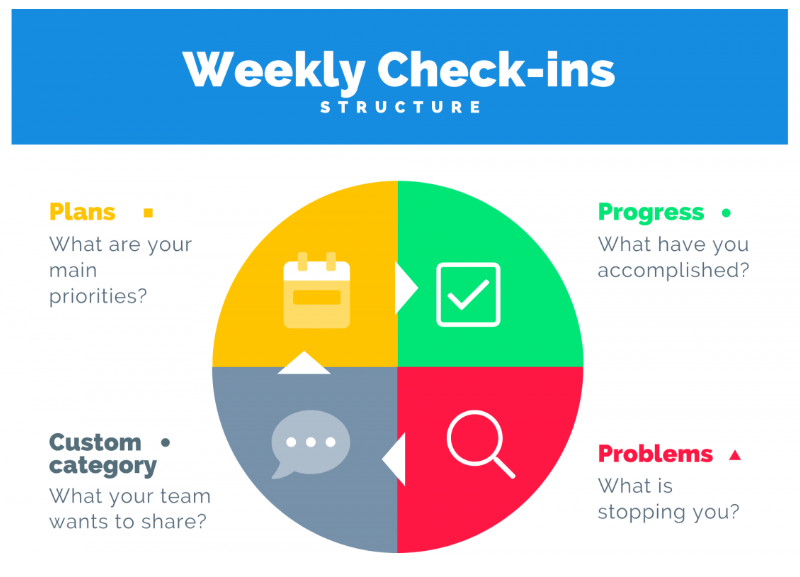
When to score OKRs?
The ideal period to grade OKRs is 3 times during a quarterly OKR cycle. Once a month during team monthly reviews.
Companies like LinkedIn and Google may evaluate OKRs less frequently as they plan on an annual basis. Meaning they may leave OKR scoring for their quarterly retrospectives.
However, for smaller companies and those new to the OKR methodology, scoring OKRs during your monthly OKR review works best within the OKR cycle. This provides teams with the time to familiarize themselves with the process, understand what’s working and what’s not, and make improvements at an earlier stage in the OKR cycle.
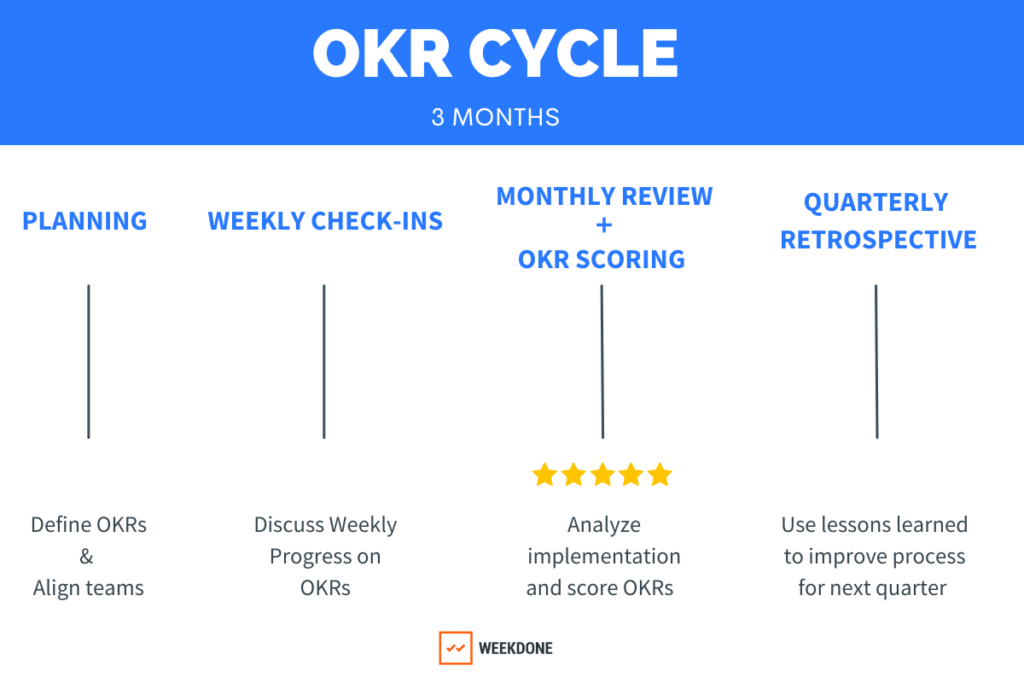
👉 Wondering if what works better – quarterly vs annual OKRs? Find out why you should use a quarterly OKR cycle to make goal-setting better and achieve long-term success.
“How Do You Score an OKR?” 3 Popular Methods
There’s more than one method to score OKRs. A conventional binary-based approach and a contemporary value-based scoring method.
Irrespective of the scoring system you choose, you need to establish:
- The OKR grading scale
- What an increment on the scale represents
- The definition of progress

The conventional binary-based stoplight approach
The conventional scoring method uses a binary approach. It’s a simple ”yes” or “no” grade to identify if you did or did not accomplish a Key Result.
Another advanced method is by ranking Key Results on a scale of 0.0 to 1.0. Where 1.0 = success and 0.0 = failure.
Using this OKR grading scale the averages of individual Key Results are used to score the Objective. Increments on this scale indicate the success of completion.
Progress in this scoring system is color-coded like a traffic light or stoplight, representing success or failure using RAG ratings (red, amber, and green).
🚦 A typical scale for evaluating progress would look like this:
Conventional OKR scoring example
Let’s take the example below to illustrate the conventional method of scoring.
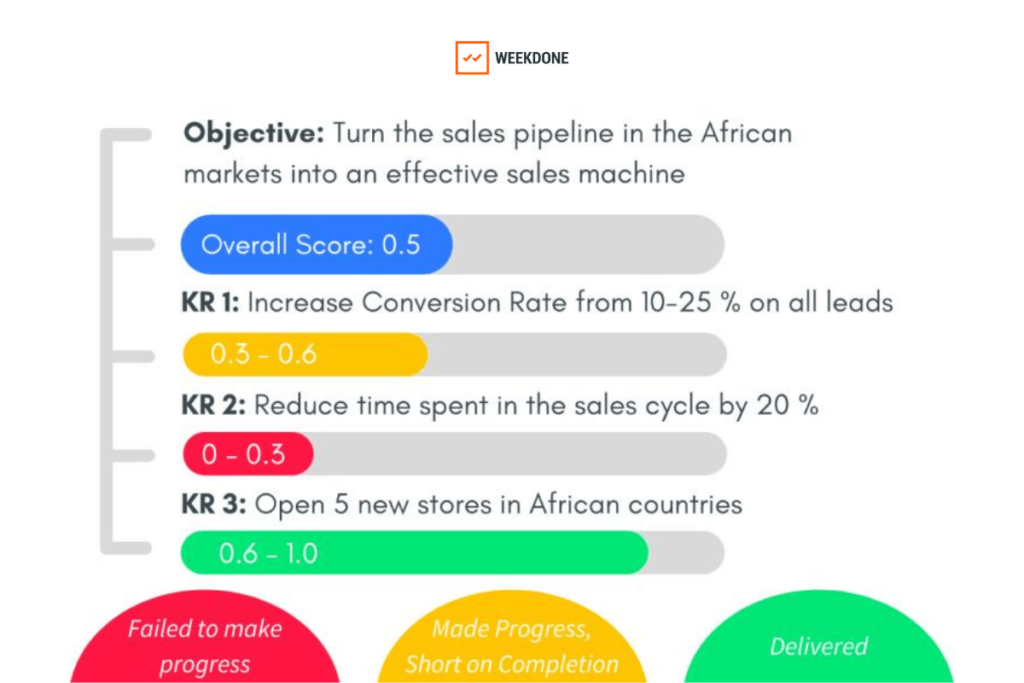
In the example, here’s how key results would be scored based on performance:
- KR 1: If the team achieved a 15% conversion rate the score would be 0.6.
- KR 2: If the time spent in the sales cycle was reduced by 8 percent, the score would be 0.3.
- KR 3: If 4 stores were opened instead of 5 the score would be 0.7
The average of the 3 scores for the Key Results or the Objective’s final score would be 0.5.
Contemporary value-based key results approach
Value-based scoring of Key Results allows you to easily measure the outcomes of successful activities. The premise of this scoring method is not binary. It records the success and failure through the value that individual Key Results deliver.
Transitioning from a conventional to a contemporary OKR scoring method need not be complex. Many companies use an OKR software to ensure their OKRs are set, tracked, and measured accurately.
Contemporary OKR scoring example
The example below illustrates how you can set value-based Key Results:
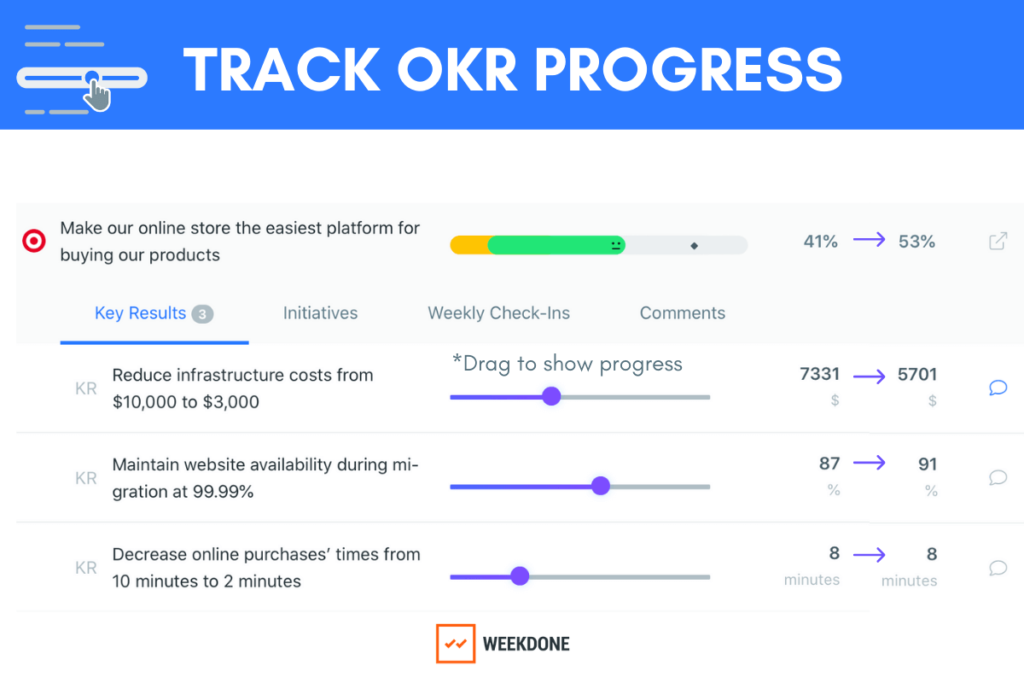
From the example you can see that the Key Results set a clear baseline, they are quantitative and measurable, and also illustrates whether they are ambitious or not. The scoring system not only focuses on the value a Key Result can deliver it is also measurable, actionable, and quantifiable:
- Value of KR 1: Reducing infrastructure cost from 10,000 to 3,000 (quantitative metric)
- Value of KR 2: Maintaining website availability during migration at 99.99% (quantitative metric)
- Value of KR 3: Decrease time buyers need to make an online purchase from 10 minutes to 2 minutes (quantitative metric)
Scoring Key Results in this way allows for simpler OKR evaluation. It helps to establish and monitor detailed OKR metrics throughout the quarter.
Predictive Forecasting Method
Another method used to score OKRs is by determining the confidence level of achieving an Objective.
Predictive scoring indicates the confidence level of achieving an OKR to assess whether your Key Results are on track. Typically, an OKR is considered as “achieved” when at least 70% progress is made.
Using this predictive approach teams decide on their confidence levels on a scale of 1 to 10, represented as a percentage. At the beginning of the quarter, the team sets the score depicting the confidence level (which is usually set at 50%).
During Weekly Check-ins, this score is reviewed to check whether the confidence levels have grown, remained the same, or reduced. While confidence levels could vary at the beginning of the quarter they should ideally be agreed upon and set before the end of month 1.
🚦 The 3 confidence levels that indicate the progress of an OKR include:
- On-track – Positive confidence in achieving the OKR
- Off-track – Difficulties prevail but there is confidence in achieving the OKR
- At-risk – Difficult to achieve even 70% progress
👉 Read more: Committed vs Aspirational OKRs
Comparing the 3 OKR Scoring Systems
Here’s a comparison of the previous scoring methods to understand their benefits, shortcomings, when they should be ideally used, and who they are best suited for.
OKR Scoring Methodologies
Historical Scoring Method and Conventional Stoplight System
| Benefits | – Easier to monitor progress with a color-coded and numerical scheme – OKR visualization with an easy-to-view option gives instant insights into the progress |
| Drawbacks | – No clear baseline depicting where the team started – Scoring is subjective and could create confusion about what it means – Makes grading OKRs more complex because everyone has to agree on the scores set at the start of the quarter |
| When to score OKRs | Typically used at the end of the OKR cycle |
| Best suited for | – Monitoring individual progress – When success is qualitative and subjective, and no measurable impact can be expected from the team – When Key Results are binary – in a way that they can be achieved or not. |
Value-Based Key Results Scoring Method
| Benefits | – Provides clear, measurable KRs with a specific baseline to measure against – Uses numeric and data-based information – thereby increasing accuracy and avoiding subjectivity – Can analyze progress earlier in the quarter if reviewed weekly |
| Drawbacks | – Requires insight into the progress of the company before Key Results can be set – It could be challenging when setting personal OKRs – Requires regular Check-ins, which could be difficult to manage without the right OKR software |
| When to score OKRs | Ideally must be done weekly |
| Best suited for | Teams with a focus on improvement and delivering value-based Key ResultsCompanies with an open culture where feedback and reviews are discussed |
Predictive Forecasting Method
| Benefits | – Assessing progress within the OKR cycle allows teams to anticipate problems, identify solutions, and change focus sooner -Works well for agile teams that need to change their priorities quickly |
| Drawbacks | – Scoring can be subjective as confidence levels are set by individuals – Analyzing confidence levels and managing weekly review meetings could be challenging without an OKR software |
| When to score OKRs | Can be used weekly in OKR review meetings or the middle of the cycle |
| Best suited for | Smaller teams that are new to OKRs – Startups or agile teams that need to move fast to address challenges |
💡 For OKR scoring to be done accurately, it requires following a consistent process of analyzing, reviewing, and updating the progress.
Most agile and modern companies use an OKR software to implement OKRs effectively. Find out how to easily score, track, measure, and update OKRs in Weekdone. 👇
Best Practices for Effective OKR Scoring
Choose a scoring system that fits your business. What works for mature companies like Google and LinkedIn may not work for you!
👉 Find out how you can Contextualize Google OKRs
Let’s summarize the best practices you can adopt to ensure you are scoring OKRs effectively:
- Define scoring criteria and metrics
When creating scores for Key Results, identify the metrics and criteria that you will use to grade OKRs. Also, define the increments you will need to improve scoring in the future.
- Grade key results, not objectives
In the OKR framework, Objectives are created to be aspirational. Typically, only Key Results are graded on a scale, and Objectives are scored using a binary method – to determine if they are achieved or not.
- Keep an effective cadence
It is ideal to set OKRs quarterly and review the scores weekly or monthly. This gives time to have four review cycles in a year and regular weekly improvements.
- Improve OKRs by analyzing past scores
Good practice in the OKR scoring system is to take insights from previous scores and redefine OKRs for the next cycle. In this way, you can identify the perfect scoring method that can derive optimal results.
- Keep scoring authentic
OKR scoring must not be considered an assessment of performance. Instead, it should be an indicator of improvement areas and help work toward achieving the objectives.
- Make OKR scores visible to everyone
By providing transparency into OKR scores of different teams it is motivating to observe progress. This also helps to encourage everyone to advance toward their goals.
- Make OKR scoring easier and effective
Keeping track of and measuring OKRs can be a tedious process. A poor scoring system and demotivating results can lead to fewer people adopting OKRs. If you are wondering how to score OKRs more effectively and efficiently, use an OKR software.
Choose the Right OKR Software to Effectively Score OKRs
Utilizing dedicated OKR software makes it easier for teams to understand how to measure OKRs and monitor their progress throughout the quarter. An ideal OKR software streamlines the process of setting, evaluating, and scoring OKRs. It saves time spent on manually updating OKR spreadsheets.
High-Performing OKR Software Options with OKR Scoring Features
1. Weekdone
OKR Software programs like Weekdone automatically calculate scores on the platform. Based on completion time from the start of the quarter, this system takes the guesswork out of the progress and avoids overestimating metrics.
RAG+B Rating – Going Beyond the Historical Scoring System
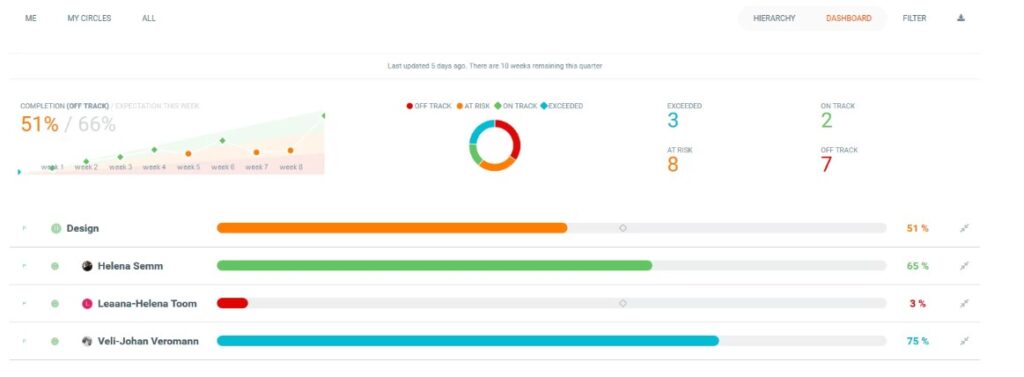
OKR Software programs like Weekdone automatically calculate scores on the platform. Based on completion time from the start of the quarter, this system takes the guesswork out of the progress and avoids overestimating metrics.
The typical status that OKR scores have are off track = red, at-risk = amber/yellow, and on track= green.
💡 An extended RAG+B rating system was introduced – where blue represents OKR scores that exceeded expectations.
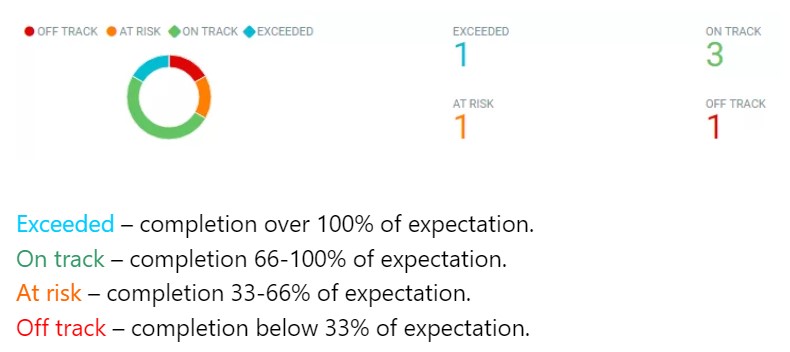
Without disrupting the existing system, using this extended system score OKRs allows everyone to observe improvement areas and activities that deliver exceptional results.
👉 Find out how our visual OKR dashboards work in Weekdone. See an overview of company, department, team and individual progress to instantly improve your understanding of business health.
2. Huminos
The Huminos platform uses a standard scoring method and calculates the score based on the progress of Objectives and Key Results. The scoring indicators include:
- Green – Exceeds Expectations
- Orange – Meets Expectations
- Red – Fall Short
At the end of the OKR cycle, the score of the OKRs given by managers or OKR owners are made visible based on the rules configured. For instance, if 60% progress is made for specific Key Result, the score will be 0.6 and will be labeled as “Meets Expectations”.
Based on the progress of every Key Result the default score is calculated. Once users assign a score to an OKR, no check-ins are permitted.
Changes to the score can be made by the OKR owner and remarks about the change can be added. Managers can also override scores given by users and add their remarks.
3. Tability
In the Tability platform, progress of Key Results is calculated based the formula below:
% Progress = (<current value> – <starting value>) / (<target value> – <starting value>) * 100
For instance, consider this KR – To increase CSAT from 15 to 40
Assigning a score of 35 to this KR means that the progress of your goal is 80%
(35- 15) / (40 – 15) * 100 = 80%
In addition to this, Tabliity also has a simple status indicator reflecting the Confidence of achieving an OKR. The scale that can be updated at the end of the quarter. The indicator and scale includes:
- Green – On Track – 80-100% completed
- Yellow – At Risk – 60-80% completed
- Red – Off Track – 0-60% completed
The entire scoring process and generating of check-ins is automated. However, it is recommended that with every check-in an analysis about the progress can help teams understand how they performed and what needs to change moving forward.
Already have your scoring criteria defined? Use an OKR software that tracks, measures, and scores your OKRs automatically.
